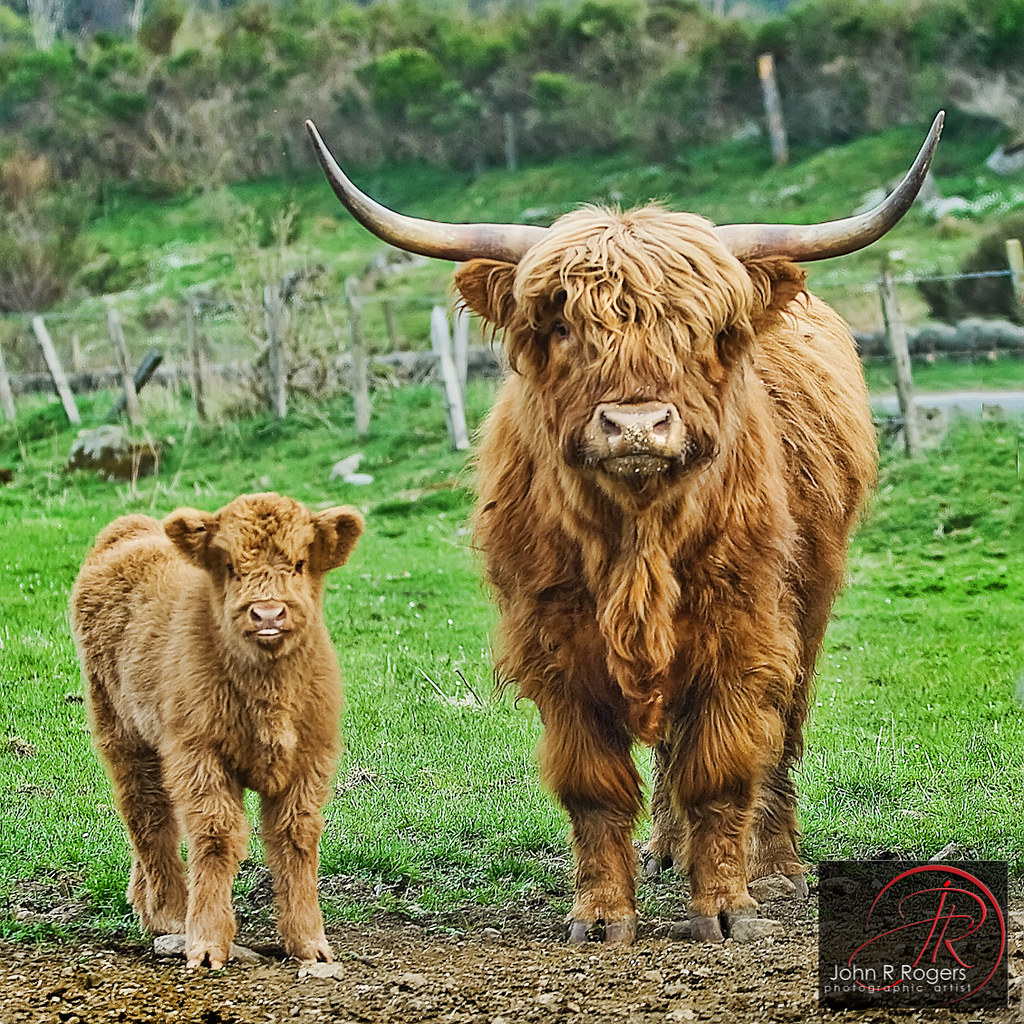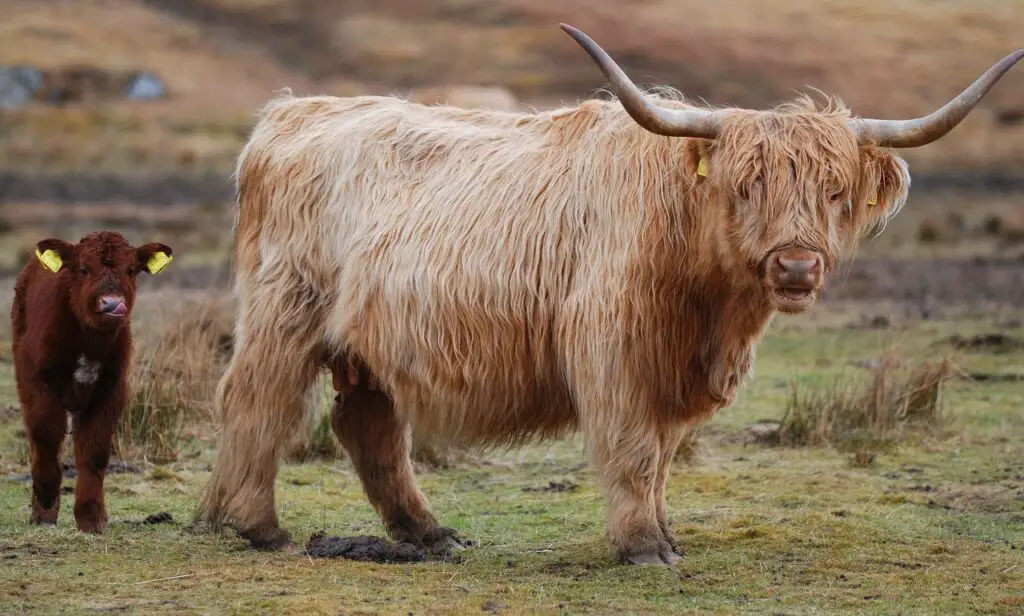
Sturdy, shaggy, and sporting horns fit for a king – that’s the Highland cow. It’s a breed that conjures up images of windswept Scottish moors and embodies resilience in every fiber of its being. From their flowing locks to their gentle nature, Highland cattle have an undeniable charm that has made them beloved across the globe. But what is it about these iconic cows that makes them so unique? Let’s journey together into the captivating world of the Highland cow.”
Origin of Highland Cattle
The tale of Highland cattle begins in the Scottish Highlands, a region known for its harsh weather and challenging terrain. Over centuries, natural selection shaped a breed perfectly suited to this environment. Highland cattle could thrive where other breeds would struggle, becoming an essential part of life in the Highlands.
Characteristics of Highland Cattle
Here’s what makes Highland cattle truly stand out:
- Double Coat: Their long, shaggy coat has two layers – an oily outer layer that repels rain and a downy undercoat for insulation.
- Impressive Horns: Both bulls and cows sport horns, with shapes varying between individuals.
- Range of Colors: While ginger-red is most common, Highland cattle also come in black, white, brindle, and more.
- Hardiness: They withstand harsh winters and make the most of less-than-ideal forage.
- Temperament: Highland cattle are generally known for their docile and easygoing nature.
Advantages And Disadvantages Of Highland Cattle
Advantages of Highland Cattle
Why are Highland cattle a popular choice for so many? Let’s look at the benefits:
- Low-Maintenance Grazing: Their foraging prowess makes them ideal for clearing overgrown areas and managing diverse landscapes.
- Premium Beef: Highland beef is recognized for its leanness, tenderness, and exceptional flavor.
- Longevity: These cattle often have long productive lifespans, maximizing the return on your investment.
- Unique Appeal: Their striking looks add visual interest to any homestead or farm.
- Gentle Giants: With proper handling, they can be remarkably friendly and personable.
Disadvantages of Highland Cattle
It’s important to understand the potential challenges before bringing home Highland cattle:
- Independent Streak: They can be a bit more independent than some other breeds, requiring patience and good fencing.
- Potential for Overgrazing: Careful pasture management is key, as they are efficient grazers.
- Slower Growth: They don’t reach market weight as quickly as some commercial beef breeds.

Scottish Highland Cattle
While you’ll find Highland cattle across the globe, it’s important to acknowledge their Scottish roots. In their homeland, they were traditionally used for meat, milk, and even pulling carts! Their hardiness and adaptability made them vital for survival in the Scottish Highlands.
Highland Cattle Characteristics Tabe
| Trait | Description |
|---|---|
| Color | Black, red, yellow, white, dun, silver dun, brindle |
| Heat Tolerance | Low (due to thick coat) |
| Cold Tolerance | High (due to thick coat) |
| Average Cow Weight | 1100-1500 lbs |
| Average Bull Weight | 1800-2200 lbs |
| Size | Small to medium-framed |
| Temperament | Docile, curious |
| Maternal Traits | Excellent mothering instincts, protective of calves |
| Milk Production | Moderate (enough for calf growth, not substantial for dairy production) |
| Beef Production | Lean, flavorful beef has, slow growth rate compared to other beef breeds |
| Other Notable Traits | Longhorns (used for defense and foraging), hardy, adaptable to harsh environments, good grazing ability, long lifespan |
Miniature Highland Cattle & Mini Highland Cattle
Looking for that Highland charm in a smaller package? Miniature Highland cattle are a popular option, especially for smaller farms or homesteads. Here’s the lowdown:
- Smaller Size: Mini Highland cattle are still stocky, just notably shorter than standard Highlands.
- Similar Qualities: They retain the adorable shaggy coat, horns, and docile personality of their larger counterparts.
- Considerations: They generally produce less meat but are also easier to manage due to their size.
Where Do Highland Cows Live in the US?
You might be surprised to learn that Highland cattle are thriving across the United States! Their adaptability allows them to flourish in various climates, from snowy northern states to hotter southern regions. With their growing popularity, chances are there’s a Highland cattle operation near you.
FAQ Section
Can you keep a Highland cow as a pet?
While possible, it’s crucial to remember that they are livestock with specific needs. Research, adequate space, and a commitment to responsible ownership are a must.
Are Highland cows friendly?
Generally, yes! With proper socialization and handling, they are known for their calm and gentle demeanor.
What are the cons of Highland cattle?
We covered these in the “Cons” section – they can be independent, require good grazing management, and mature more slowly than some other beef breeds.
Why are Highland cattle so expensive?
High demand for breeding stock, their unique qualities, and relatively smaller herd numbers contribute to higher prices.
Are Highland cattle aggressive?
Like any cattle breed, they can become defensive if startled or protecting their calves. Always approach cattle with respect and cattle.

Conclusion
From their rugged Scottish origins to their growing popularity worldwide, Highland cattle are a breed like no other. If you’re searching for hardy, low-maintenance livestock that produce delicious beef, add a touch of whimsy to your property, and perhaps even become friendly companions, Highland cattle deserve your serious consideration.
Have you had the pleasure of encountering Highland cattle? Share your experiences or questions in the comments below!
